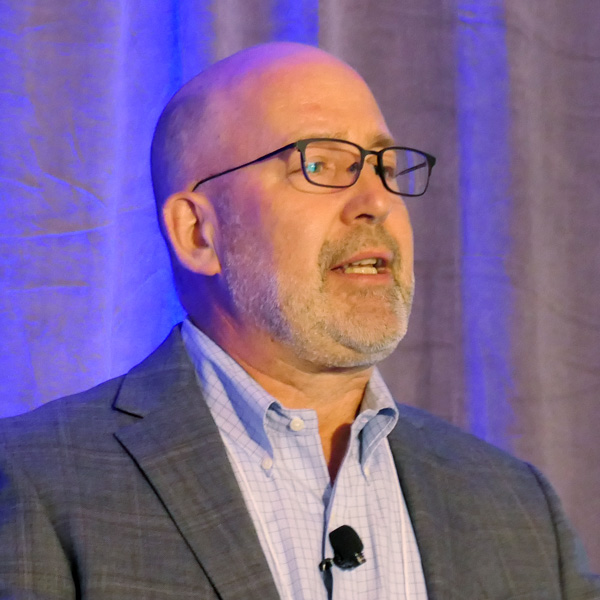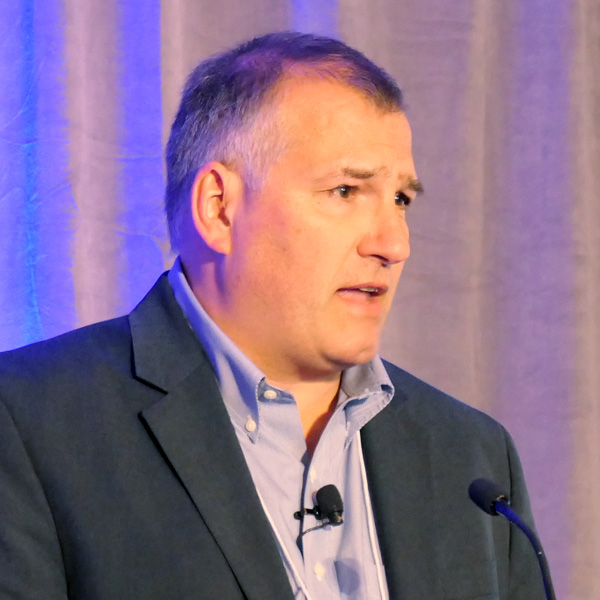
p.p1 {margin: 0.0px 0.0px 0.0px 0.0px; font: 11.0px ‘Helvetica Neue’; color: #000000}
BREWSTER, Mass. — “Transmission, transmission and transmission.”
Those are the top three near-term priorities of FERC Commissioner Willie Phillips, and his message was well received in New England last week, where energy regulators and officials were gathering for the New England Conference of Public Utilities Commissioners’ annual Symposium.
The region’s energy experts are well aware that the clean energy transition, and states’ goals to add thousands of megawatts of clean energy a year, will require new wires to carry that electricity to consumers.
 Johannes Pfeifenberger, Brattle Group | © RTO Insider LLC
Johannes Pfeifenberger, Brattle Group | © RTO Insider LLC
FERC is hoping to send help as they work on a Notice of Proposed Rulemaking, issued in April, that would require longer-term regional transmission planning and new cost allocation procedures for projects (RM21-17).
“The NOPR proposal … can help us ensure reliability of our system, and I believe it can bring costs down for our consumers, if we do it right,” Phillips told the NECPUC audience.
Johannes Pfeifenberger, an economist and principal at the Brattle Group, said the NOPR is “an opportunity to … create a tariff structure that allows more proactive, multivalue planning to come to this region.”
To some of those tasked with putting up wires in New England, however, the broader planning issues aren’t the main barrier.
 Bill Quinlan, Eversource | © RTO Insider LLC
Bill Quinlan, Eversource | © RTO Insider LLC
“The planning of the system I think is well in hand between [ISO-NE] and transmission owners,” said Bill Quinlan, Eversource Energy’s president of transmission and offshore wind projects. “We can engineer these projects; we certainly know how to finance these projects. Where most large infrastructure projects get held up is either in siting or disputes about cost allocation.”
He said the rulemaking is a “very positive framework” to operate in, but that siting is the biggest hurdle.
The opposition to transmission projects has gotten both more political and more sophisticated, said Jared des Rosiers, a partner at Pierce Atwood who focuses on siting.
“These siting processes really are political campaigns. The messaging is messaging of the political process,” he said. “It’s not so much about the facts and the benefits of the project and what it does in terms of investments or jobs or taxes. It’s soundbites or messages that attract or support or oppose different groups.”
 Jared des Rosiers, Pierce Atwood | © RTO Insider LLC
Jared des Rosiers, Pierce Atwood | © RTO Insider LLC
Des Rosiers also said the fact that there are now competitive solicitations for transmission projects creates new, challenging dynamics. It’s no longer just “abutters or neighbors or NIMBYs” (not in my backyard) who are stepping up to challenge projects.
“We’ve gone to a competitive process for transmission. By its nature, that means there are winners and losers in the procurement for transmission,” des Rosiers said. “Once you lose the solicitation, you may now participate in the siting process in a way that is not necessarily constructive for getting the project sited.”
He called on political leaders in the region to step up their messaging efforts around building transmission and focus on the process in addition to the policy.
